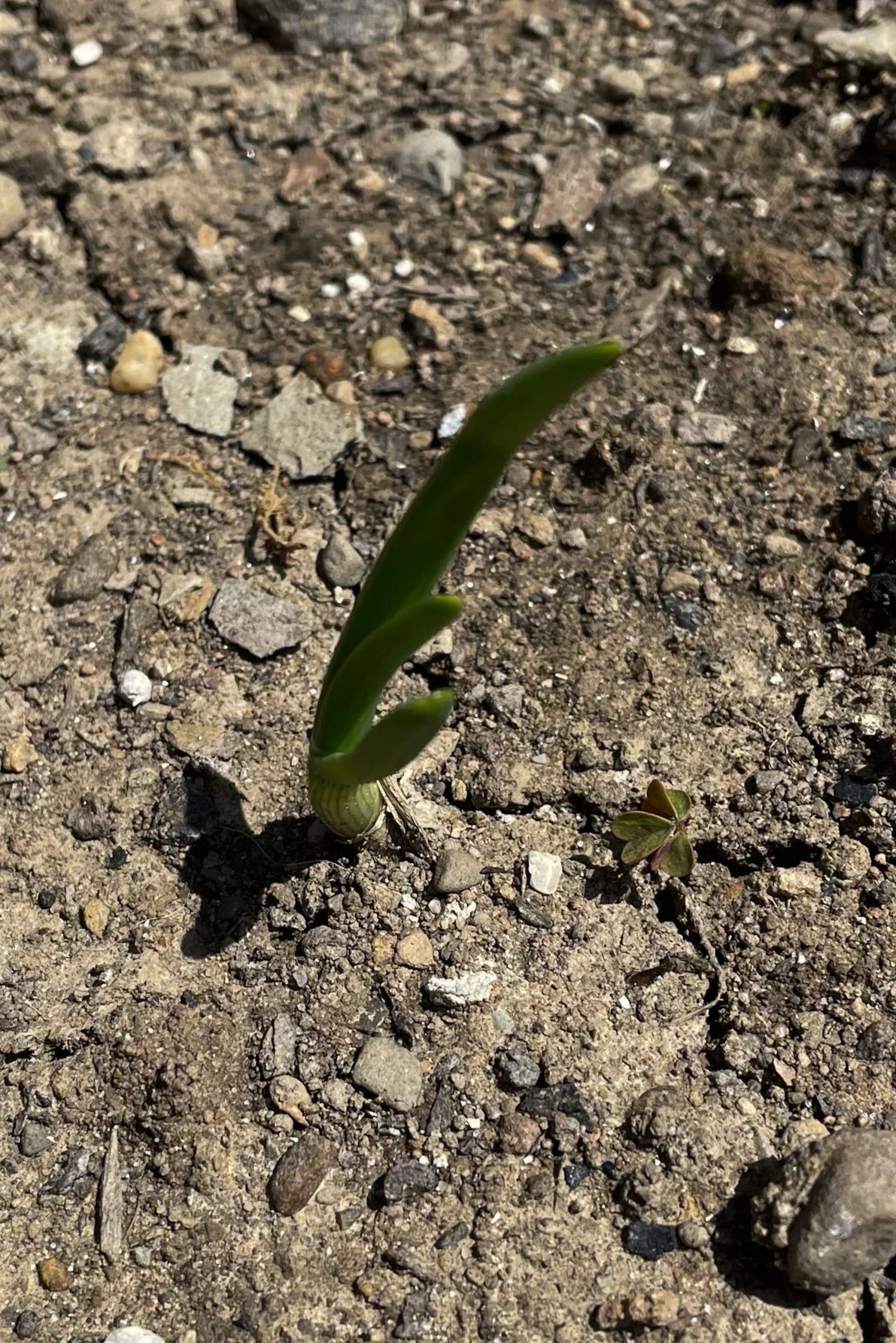Growing 101: Onions
Onions are a great addition to any garden! Along with that strong, lingering, delicious taste, they may provide many health benefits and even keep pests away from your other plants.
What Type of Onion?
According to onions-usa.org:
Yellow – All-purpose and most popular. The best type of onion for caramelizing during cooking.
Red – Most popular for salads and sandwiches.
White – Commonly used in sauces, potato and pasta salads, and Mexican and Southwest cuisine. White onions don’t store quite as long as the other varieties.
Planting & Care
Early spring is the perfect time to plant onions as soon as the ground can be worked. You don’t have to wait until our last frost date. I planted mine during the last week of April when we (finally!) had a few days without rain.
You can plant onions from seeds, seedlings, or sets. Seeds need started indoors by February for transplanting in the spring. Seedlings are young onion plants that can be planted directly into the ground come spring. Sets are small, partially grown onions that are also easy to plant directly into the ground (pictured above). I chose to plant sets this year, which you can buy at stores like Agway or Oesterling’s.
Onions prefer well-drained soil with a pH of 6.0-7.0. They’ll grow best if you add a lot of organic matter, i.e., compost or well-aged manure, before planting. You’ll also need to choose a sunny spot because they like at least 6-8 hours of sunlight a day.
Plant the onion sets about 1-2 inches deep and 3-6 inches apart. Mine are in rows about 6 inches apart in a raised 4 x 4-foot bed. I only need enough space for weed control to use a hand-held tool. You can plant your rows about 12-18 inches apart depending on how much space you need to maneuver in your garden.
Onions prefer consistent moisture, especially during the early stages of growth. Water once or twice a week – preferably in the morning – unless it’s really dry. Too much water, however, encourages mold and mildew, so too little is better than too much!
Throughout the summer, keep your onion bed as weed-free as possible. Weeds compete with your plants for nutrients and water. Gently work the soil around the onions with a hoe or garden tool. Be careful not to damage the bulb and its shallow roots. You can keep the weeds down by adding a couple inches of mulch, i.e., grass clippings.
Onions are heavy feeders. Once they have grown about 6 inches tall, apply a balanced fertilizer (like 10-10-10), preferably organic. A balanced fertilizer contains equal parts of nitrogen (N), phosphorus (P), and potassium (K).
Onions are ready to harvest when the tops begin to turn yellow and fall over. Carefully dig up the bulbs, shake off excess soil, and let them dry in a well-ventilated place for a week or two. Once the outer skin is papery and the roots are dry, trim the tops and roots, leaving about 1 inch of the stem. Store cured onions in a cool, dry, well-ventilated area.
Companion Planting for Deterring Pests
Onions make excellent companion plants for many vegetables and herbs due to their pest-repelling properties. The strong scent and sulfur compounds in onions can help repel pests like aphids, cabbage loopers, and carrot flies. To use onions for this purpose, plant them as a companion crop. Onions work really well at repelling pests that target the cabbage family, such as broccoli, cauliflower, and Brussel sprouts. Some of the best companion plants for onions include:
Broccoli
Cabbage
Carrots
Cucumbers
Herbs
Kale
Lettuce
Peppers
Strawberries
Tomatoes
And we have to mention their health benefits! Onions are rich in vitamins, minerals, and antioxidants, especially vitamin C, which supports a healthy immune system, while being low on calories. Onions are also a good source of dietary fiber, supporting digestive health. Happy gardening!


